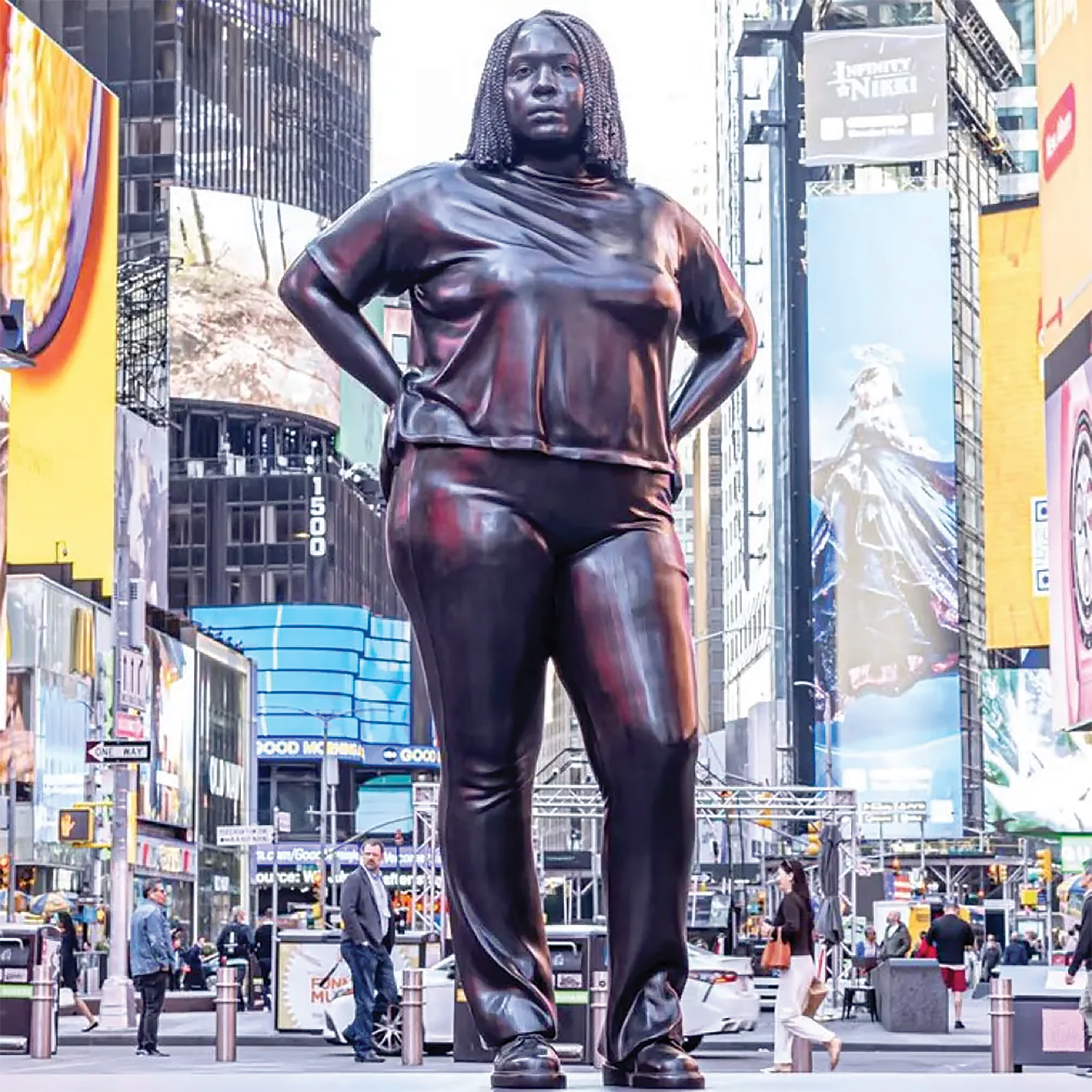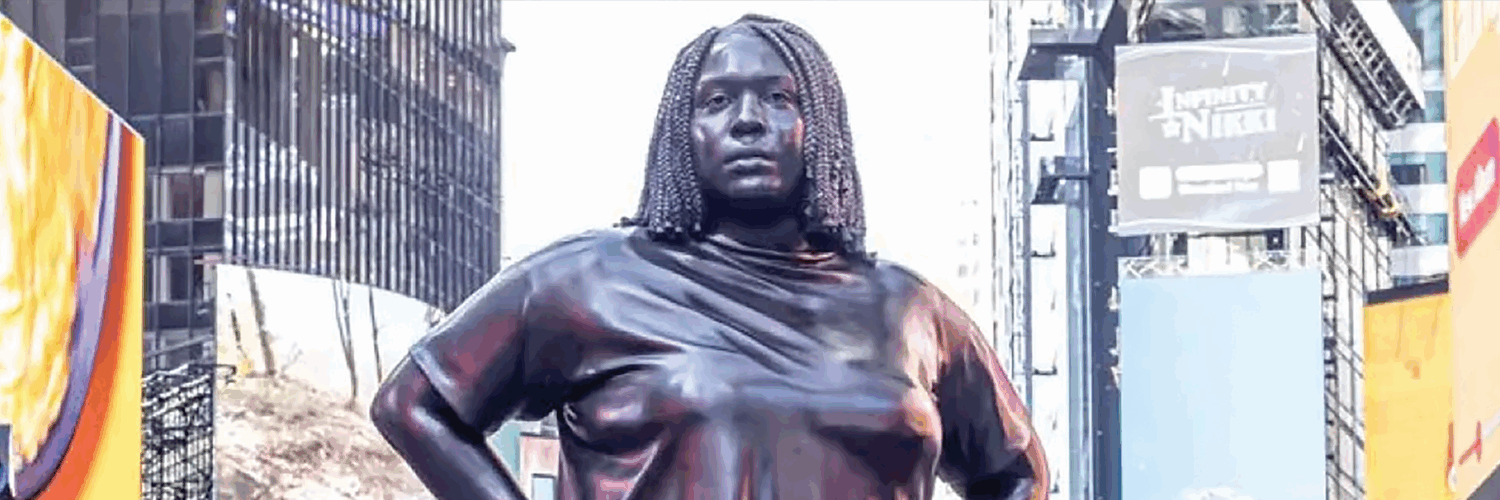SHARED HUMANITY: A petition wants British artist Thomas J Price’s artwork removed, but he says it challenges traditional monuments and generates public dialogue…
By Jasmine Browley
A new public art installation in New York City’s Times Square is sparking conversations about representation, identity, and the role of monuments in public spaces.

British artist Thomas J Price’s 12-foot bronze sculpture, “Grounded in the Stars”, was unveiled late last month, at the intersection of Broadway and 46th Street. The statue portrays a young Black woman in casual attire standing with her hands on her hips—a pose that subtly references Michelangelo’s.
Price’s work challenges traditional notions of monumentality and who is deemed worthy of public commemoration. The artist invites viewers to reflect on shared humanity and the diversity of experiences that shape society by depicting an everyday figure rather than a historical or mythical hero.
The sculpture is part of a broader initiative by Times Square Arts, featuring Price’s Man Series—animated sculptures displayed on 95 digital billboards nightly throughout May as part of the “Midnight Moment” program.
This multimedia presentation continues the tradition of thought-provoking public art in Times Square.
Public reaction to “Grounded in the Stars” has been mixed. While many praise the piece for its inclusive message and challenge to conventional standards, others have criticized it, reflecting ongoing debates over representation in public art. The installation contrasts nearby statues of historical white male figures, prompting discussions about whose stories are told in public spaces.
In her article published in the black-owned online publication Refinery29, Taryn Finley reports that the statue is revealing exactly what people feel about Black women.
“Some folks on social media have called the statue disrespectful, fat, Black and ugly and even monstrous. The commentary has been alarming and unfortunate.
It felt like there was a bigger issue at play, so I decided to go see the statue myself.
“The sculpture stands between West 46th Street and West 47th Street in one of the most iconic tourist destinations in the world.
Facing north, she towers over two statues of white men — Catholic priest Francis P. Duffy and playwright George M. Cohan — at the top and bottom ends of the block. (It’s worth noting, both are permanent fixtures while Grounded in the Stars will be on display until June 17.)
“With a proud posture and hands on her hips, the structure is a headturner. Unveiled on April 29, she’s an unidealized fictional character in plain clothes with a vacant stare and undoubtedly Black facial features.
Her ease is meant to give a ‘subtle nod to Michelangelo’s David and disrupt ‘traditional ideas around what defines a triumphant figure and challenges who should be rendered immortal through monumentalization’.
“But according to societal standards, she represents three things that no one dares to be, lest be treated lesser: fat, Black and a woman. And because of that, much of the online debate surrounding the statue has sparked conversation rooted in misogynoir, elitism, fatphobia and just plain hate,” writes Finley.
She writes that many of those loud and wrong critics are the usual suspects: conservatives who also believe diversity, equity and inclusion efforts are unnecessary and racist trolls who have used AI to turn the statue into a racist caricature.
“They’ve even dubbed her an “angry Black woman” despite her neutral facial expression. Even an inanimate sculpture representing a Black woman gets hit with stereotypical projections. There’s no surprise here”.
An anonymous person has even started a petition calling for the statue’s removal, stating that Black women have become targets of hate and bullying since it was erected.
“Unlike the graceful and dignified portrayals often seen in public art of women from other backgrounds, this statue presents a distorted image of Black women that promotes harmful stereotypes rather than inspiring pride or respect,” reads the petition, which has more than 1,000 signatures.
There’s victory in this statue’s very existence. Not only because it disrupts traditional ideas of what a sculpture should be, but also because regardless of the conversation surrounding it, Grounded in the Stars still stands proudly, writes Finley.
It’s true that Black women still, in 2025, don’t have an adequate amount of images that represent the full spectrum of who we are, Finley adds.
“But a part of humanising us has to be rooted in the mundane and unglamorous, too. Because we are here. And that, in and of itself, is glorious”. – BET, Refinery29





























